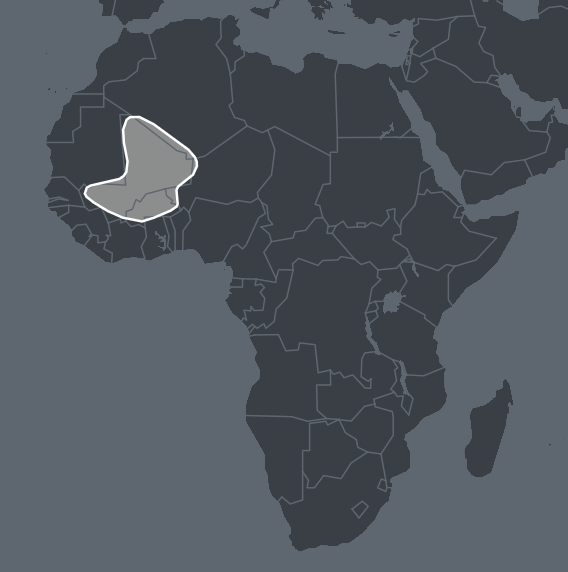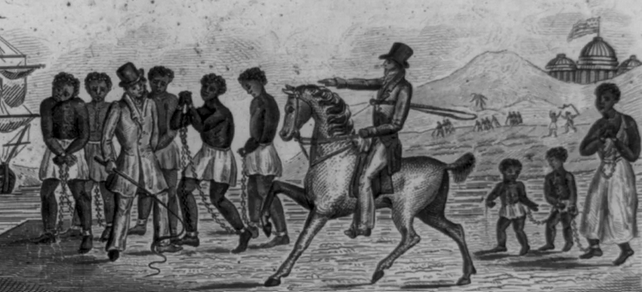What is Mali DNA Ethnicity on Ancestry?
In this article we are going to take a closer look at the Mali DNA region to learn about its history and what it means to have a connection to this unique region. So if you are looking to get to the bottom of your potential Mali history read on.
Mali DNA Region
As the name would suggest the bulk of the MALI DNA region covers the West African nation of Mali itself. It does not cover all of the country however as there are some regions in which this DNA signature is not as common.

The DNA region does also extend beyond the borders of Mali with considerable populations found in other West African countries such as Niger, Burkina Faso, Benin and Mauritania. It should be noted that the small nation of Burkina Faso does have a widespread population with common DNA markers with Mali.
History of Africa
According to the paleontological record, it was the continent of Africa in which the first hominids developed. These early hominids were the first to walk in a bipedal motion and it is from them that eventually humans as we know them today evolved.
The fossil records suggest that homo sapiens were living in Africa between 260,000 to 350,000 years ago. Remains from South Africa, Morocco and Ethiopia seem to suggest that homo sapiens were already widespread throughout the continent during that time frame.
History of Mali
Early History
Rock art discovered in Northern Mali indicates that humans have lived in the area since at least 10,000 BC. At that time the parts of the Sahara in the region would have been lush and fertile. Further south in Central Mali ceramics have been discovered that date human habitation of that region back to around 9,400 BC.
The discovery of these ceramics is thought to indicate an independent creation of pottery that was not learned from elsewhere. Later indications in the region indicate that farming developed in the area in roughly 5,000 BC and that the use of iron tools emerged in around 500 BC.
During the first millennium BC there are indications of the first cities and towns developing in the country by the Mande peoples. The Mande are thought to be connected to the Soninke peoples southern Mauritania, eastern Senegal, Guinea and Gambia.
These early population centers arose along the Niger river in central Mali and would have included the town Dia thought to have developed around 900 BC. It would reach its peak by 300 BC and remain a major center up until 900 AD.
Ideally placed to be central to the trans-Saharan trade routes, commodities such as salt, slaves and gold would bring prosperity to the region and made Mali a major part of the West African Empires. This would include early empires like the Ghana Empire but eventually the Mali Empire developed around the 14th century.

Effect of Oceanic Trade Routes
Mali’s trade power came from being a major stop along the trans-Saharan trade routes but once sea routes for trade were opened up with European powers the landlocked Mali lost much of its influence and power. The coastal regions therefore saw more prosperity and contributed heavily to the trans Atlantic slave trade.

This is not to say that slaves did not come from the Mali region as those sold by the coastal nations tended to be captured from neighboring countries. The Mali region may not have benefited from the lucrative trade in African slaves but they most likely saw population loss due to it.
French Influences
During the 1890s the so-called "Scramble for Africa" saw European powers take control of African nations looking to capitalize on the natural resources of the continent. Located in West Africa this meant that Mali was a target for the France who ultimately would take control of:
- Mauritania
- Senegal
- French Sudan (Mali)
- French Guinea (Guinea)
- Ivory Coast
- Upper Volta (Burkina Faso)
- Dahomey (Benin)
- Niger
It was by 1905 that most of what we know today as Mali was under the control of the French and referred to as French Sudan. This was of course not popular with the local tribes and by 1915 a large anti-French uprising occurred.
The uprising was squashed and more than 100 villages were destroyed by colonial troops. It would take some years before in 1958 the then renamed Sudanese Republic became its own autonomous republic as part of the French community.
It would briefly merge with Senegal to form the Mali Federation but by 1960 Senegal withdrew allowing the Sudanese Republic to finally become the Republic of Mali.
Where Does My Mali Region DNA Come from?
Human habitation in Mali can be dated back to 10,000 BC and in neighboring Burkina Faso there are indications of even earlier habitation perhaps to 14,500 BC. Undeniably the native populations have remained in the region for thousands of years with outside influences coming mainly from trans-Saharan trade routes.
European influence in the Mali region is newer with France becoming a ruling power in the region between the 1890s and 1950s to 1960s. This may add a certain European influence to the local DNA but in terms of Mali region DNA it is largely indigenous and may have emanated from further west, possibly around southeast Mauritania.
The spread of this unique DNA in terms of Africa as a whole is not vast but it is located in an area that could see it spread further out into Africa through trade or out in Europe and the Americas during the hundreds of years of transatlantic slave trading.
Can I Trace My Mali Ancestry?
As with many African nations it is extremely tricky to locate genealogical pertinent records due to instability and a general populace that is not being recorded thoroughly through government channels. Historically speaking Individuals with Mali heritage may have been captured as part of the slave trade and take to the New World.
They often left behind family that may well not know what happened to them and almost certainly would not have heard from them ever again. Essentially those taken as slaves lost their identity and history severing their connection to their home regions.
Ancestors who may have fled the region and taken legal paths to settle elsewhere however may be researchable through immigration records and the paperwork they create within their new homeland. Essentially the more recent the ancestor the better chance there is of finding out more about where they came from and who they were.
Final Thoughts
For thousands of years the Mali region was a big hub for the trans-Saharan trade routes and was home to major empires. With the dawn of trade by sea and European influence this power in West Africa waned.
Humans were living in the region for at least 16,000 years which contributed to a very unique and common DNA throughout Mali, Burkina Faso and some other neighboring states. They may have started as hunting and gathering tribes but they saw their share of Empires and prosperity as well.
Link To or Reference This Page
We spent a lot of time downloading, cleaning, merging, and formatting the data that is shown on the site.
If you found the data or information on this page useful in your research, please use the tool below to properly cite or reference Name Census as the source. We appreciate your support!
-
<a href="https://namecensus.com/blog/what-is-mali-dna-ethnicity-on-ancestry/">What is Mali DNA Ethnicity on Ancestry?</a>
-
"What is Mali DNA Ethnicity on Ancestry?". NameCensus.com. Accessed on May 10, 2024. https://namecensus.com/blog/what-is-mali-dna-ethnicity-on-ancestry/.
-
"What is Mali DNA Ethnicity on Ancestry?". NameCensus.com, https://namecensus.com/blog/what-is-mali-dna-ethnicity-on-ancestry/. Accessed 10 May, 2024
-
What is Mali DNA Ethnicity on Ancestry?. NameCensus.com. Retrieved from https://namecensus.com/blog/what-is-mali-dna-ethnicity-on-ancestry/.
